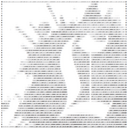Open-source maps of California’s emergency medical agencies
The Times releases map files in SHP, JSON, KML formats
The Times is releasing free and open-source files that map out the boundaries of the regional agencies that regulate emergency medical services in California.
The release coincides with a Times investigation published Friday that found that outdated technology has frustrated efforts by state officials to measure how well local agencies perform emergency rescues.
A total of 32 regional agencies regulate the emergency medical services delivered by local fire departments and ambulance firms. Many of California’s 58 counties, including Los Angeles County, have their own agency, but some smaller counties have banded with others to form regional groups such as the Sierra-Sacramento Valley Emergency Medical Services Agency.
The Times was unable to find an electronic map file that included the boundaries of these groups, so we made our own by modifying pre-existing maps of California counties. We are releasing those files today in SHP, KML and JSON formats. You can download them here:
The data were collected as part of The Times’ ongoing investigation of the Los Angeles Fire Department, which began in March after fire officials admitted that for years they released flawed figures overstating how fast rescuers arrived at emergencies. That project has yielded a series of data-driven stories about the department’s performance.
This blog has previously written about the technical methods used to conduct our investigation, released the base layer created for an interactive map of response times and contributed the location of LAFD’s 106 fire station to the OpenStreetMap.
Much respect due
The interactive map at the top of this post was created using MapBox’s excellent TileMill design studio. Areas were filled in using selections from the palette of 133 standard Crayola crayon colors. I ported them into the CartoCSS style used by TileMill. You can download that palette here.





